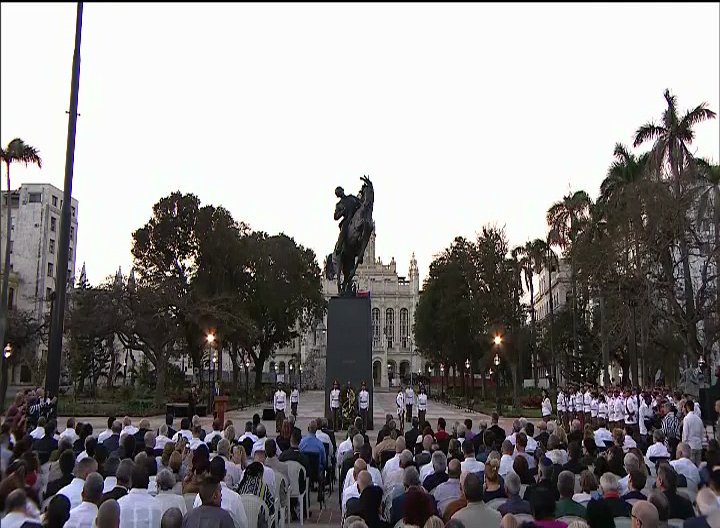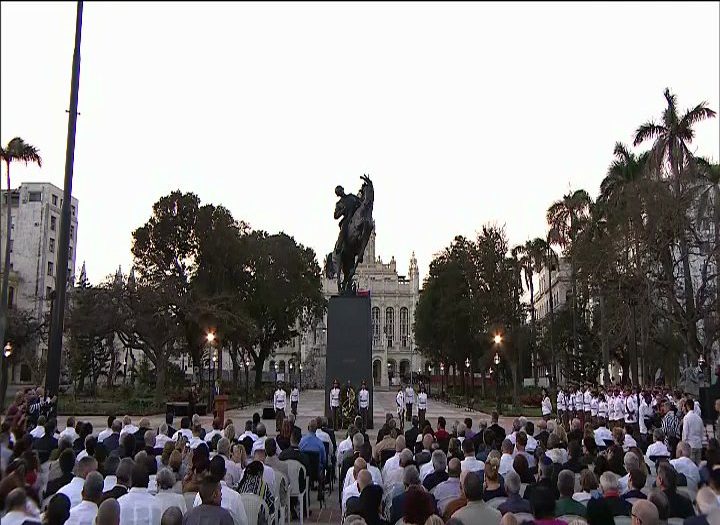
The ceremony was attended by Cuba President Raul Castro, members of the government, representatives of the City of New York and the Bronx Museum, as well as the Cuban people
Authorities from Cuba and the United States today evoked in this capital the life and work of the Apostle of the Caribbean country before an equestrian statue of the patriot, now common in both nations thanks to joint efforts.
The monument is an exact replica of one erected in the United States 60 years ago by the American sculptor Anna Hyatt Huntington (1876-1973), which can be seen in the Central Park of New York since 1965, and more than a hundred donors from several countries made their arrival in Havana possible.
The inauguration ceremony of the statue was attended by Cuban President Raul Castro, members of his government and people, as well as representatives of the City of New York and the Bronx Museum, institutions that provided vital support to the project.
On the occasion of celebrating the 165th anniversary of the Apostle’s birthday, the trustee of the Museum of the Bronx, Joseph Mizzi, pondered the friendship cultivated between both peoples during the numerous efforts to make possible the replication and transfer, something in which the American Holly worked tirelessly Block, recently deceased.
Block ran the Newyorkina gallery and despite being diagnosed with a fatal disease, she remained committed to the project until her death a few months ago.
A representative of the mayor of New York, José Velázquez, read a message from the mayor of that city, Bill de Blasio, in which he recalled the high concentration of emigrants in the city since the very beginning.
The iconic statue of Cuban patriot and writer José Martí, which stands in Central Park, has been a source of inspiration and empowerment for generations of Cuban New Yorkers, he said.
According to the message, the inauguration on Sunday of the reproduction of the monument in Havana not only marks the 165th anniversary of Martí’s birth but also ensures that his historical legacy in the pursuit of independence is shared with the new generations.
For his part, the historian of the city of Havana, Eusebio Leal, praised the aesthetic sense of the work, the serenity in the face of the hero, the poetic conception, the beauty of the set of 10.70 meters in its entirety , located near the entrance to the bay of the capital.
In the academic’s words, the piece evokes Martí in the act of his supreme sacrifice for the cause he chose as a motivation for his life.
There is serenity in his face, there is beauty in the whole in which the beast tramples herbs and lilies, perhaps evoking those words that I always considered the intimate premonition of his sacrifice: ‘my verse will grow under the grass and I will grow too,’ recalled the historian .
For Leal, Martí will forever be a man of culture; at the same time as a politician, a humanist, a speaker, a teacher.
 Escambray ENGLISH EDITION
Escambray ENGLISH EDITION





Escambray reserves the right to publish comments.